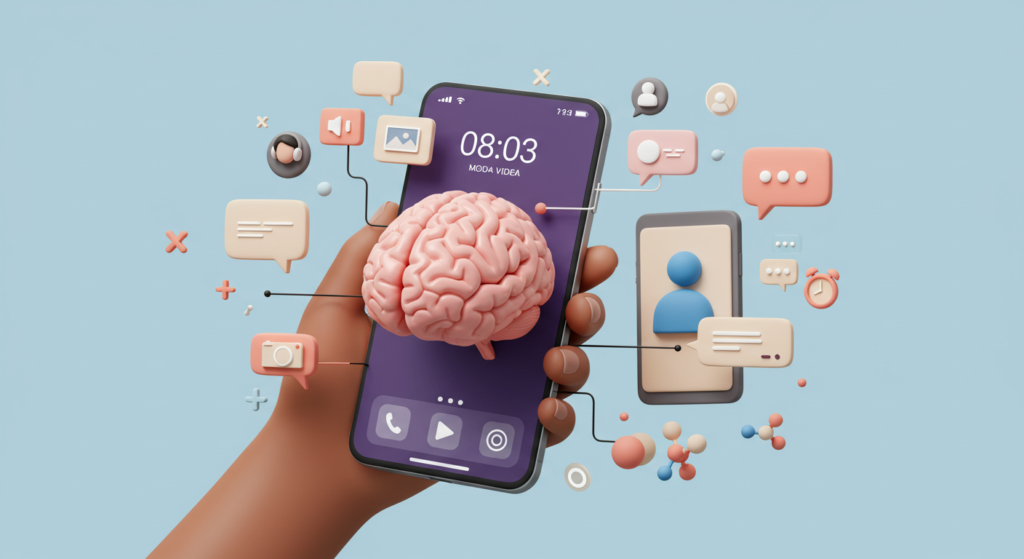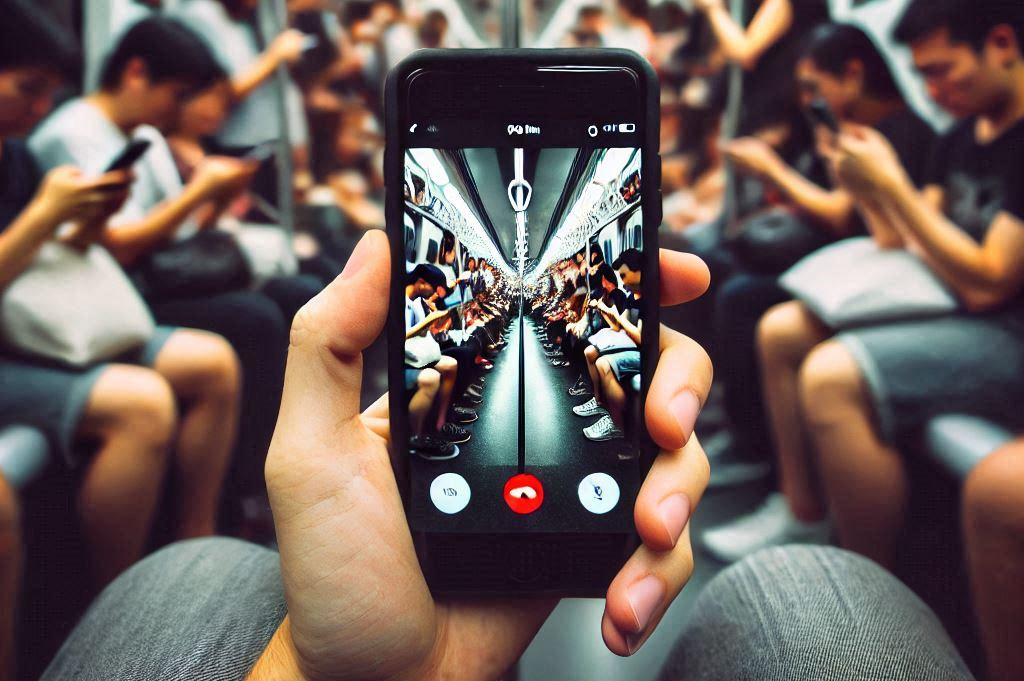TLDR; Mindless scrolling is a modern-day time sink. This article explores practical strategies to curb this habit, including understanding the triggers, setting time limits, creating a conducive digital environment, finding alternative activities, and practicing mindfulness. By implementing these techniques, you can regain control of your time and attention, leading to a more focused and fulfilling life.
Imagine this: a passenger on a long flight, settling into their seat, phone in hand, ready to dive into the familiar comfort of endless scrolling. They open their social media app, only to be met with the dreaded spinning wheel of death – the airplane Wi-Fi was, shall we say, less than cooperative. At first, they tapped the screen impatiently as if sheer force of will could speed up the connection. Then, a flicker of confusion crossed their face. It was as if they’d forgotten what to do without the constant stream of updates and notifications. They glanced around the cabin, a look of mild panic in their eyes, before finally resorting to… a book! This perfectly encapsulates the modern dilemma of mindless scrolling: we’ve become so accustomed to constant digital stimulation that we sometimes forget how to occupy ourselves without it. This habit not only wastes precious time but also impacts our mental well-being, productivity, and overall quality of life. But fear not, because with conscious effort and strategic implementation, you can break free from this cycle and reclaim your attention.
Understanding the Triggers: What Makes You Scroll? (The Dopamine Hit)
The first step to overcoming any habit is understanding its root causes. Why do we scroll mindlessly? Several factors contribute to this behavior. One key factor is the design of social media platforms themselves. They are engineered to be addictive, employing features like infinite scrolling, push notifications, and personalized content feeds that keep us hooked. The constant stream of new information and the anticipation of the next interesting post trigger the release of dopamine, a neurotransmitter associated with pleasure and reward, in our brains. This creates a feedback loop that reinforces the scrolling behavior. It’s like a slot machine for your brain!
Another trigger is boredom. When we have nothing else to do or feel mentally fatigued, scrolling becomes an easy escape. It provides a temporary distraction from our thoughts and responsibilities. Similarly, stress and anxiety can also lead to increased scrolling. We might turn to social media as a way to avoid dealing with difficult emotions or situations.
Did you know that searches for “funny cat videos” spike on Mondays and Fridays? This suggests people are using these videos to cope with the beginning and end of the workweek. It’s a digital stress reliever.

Setting Time Limits: Taking Control of Your Screen Time (Be Your Own Boss)
Once you understand the triggers, it’s crucial to establish clear boundaries. Setting time limits for social media usage is a powerful way to curb mindless scrolling. Most smartphones and social media apps offer built-in features that allow you to track your screen time and set daily or weekly limits. Utilize these tools to monitor your usage and receive notifications when you’ve reached your allotted time.
Start by honestly assessing how much time you currently spend scrolling. Then, set a realistic goal for reducing that time. It’s important to be gradual and avoid drastic changes that might be difficult to sustain. For example, if you currently spend three hours a day on social media, try reducing it to two and a half hours for the first week, then gradually decrease it further in subsequent weeks. Think of it like training for a marathon – you wouldn’t run 26 miles on your first day!
Creating a Conducive Digital Environment: Minimizing Distractions (The Digital Detox)
Your digital environment plays a significant role in your scrolling habits. By making a few adjustments, you can significantly reduce the temptation to scroll mindlessly. Start by turning off non-essential notifications. Constant pings and alerts disrupt your focus and draw you back to your phone. Only allow notifications from important apps and contacts. Imagine trying to read a book in a room full of buzzing flies – that’s what constant notifications are like for your brain.
Organize your apps and remove social media icons from your home screen. This creates a physical barrier and makes it less convenient to access these apps. You can also consider using website blockers or app timers that restrict access to certain websites or apps during specific times of the day.
Apple iOS
Turn off notifications for a specific app or mute notifications
- Turn off notifications for a specific app: Open Settings, select Notifications, scroll to Notification Style, tap the app, and toggle off Allow Notifications
- Turn on Do Not Disturb: Open Control Center, tap Focus, and then tap Do Not Disturb. This will temporarily stop notifications for all apps.
- Mute notifications for an app: Swipe left on a notification, tap Options, and then tap an option to mute the app’s notification
Google Android
To turn off notifications on Android device, you can do the following:
- Open the Settings app
- Tap Notifications
- Tap App notifications
- Find the app you want to change notifications for under Most recent
- Tap the app to turn notifications on or off
Finding Alternative Activities: Replacing the Habit (Find Your Offline Passion)
Simply restricting your access to social media isn’t enough. You need to replace the scrolling habit with more fulfilling activities. When you feel the urge to scroll, consciously redirect your attention to something else. This could be anything from reading a book, going for a walk, engaging in a hobby, or spending time with loved ones.
Identify activities that you genuinely enjoy and make a conscious effort to incorporate them into your daily routine. The key is to find alternatives that provide similar levels of engagement and satisfaction as scrolling, but without the negative consequences. It’s about finding your offline “flow state.”
I’ve noticed a trend: When I suggest alternative activities to people, like learning a new language or trying a new recipe, they often come back later with positive feedback. One person told me they started learning Spanish using an app I recommended and now they can order tacos in perfect Spanish! It’s rewarding to see people finding fulfilling activities outside the digital world.
Practicing Mindfulness: Cultivating Present Moment Awareness (The Power of Now)
Mindfulness, the practice of paying attention to the present moment without judgment, is a powerful tool for overcoming mindless scrolling. By cultivating greater awareness of your thoughts and feelings, you can interrupt the automatic urge to scroll and make more conscious choices about how you spend your time.
When you catch yourself scrolling mindlessly, take a moment to pause and observe your thoughts and sensations. Notice the physical sensations in your body, the emotions you’re experiencing, and the thoughts that are passing through your mind. This simple act of observation can help you break free from the automatic pilot mode and regain control.
There are numerous mindfulness techniques you can practice, such as deep breathing exercises, body scans, and guided meditations. Even a few minutes of daily mindfulness practice can make a significant difference in your ability to resist the urge to scroll.

The Long-Term Benefits: A More Focused and Fulfilling Life (Reap the Rewards)
Breaking free from mindless scrolling is not an easy task, but the rewards are well worth the effort. By implementing the strategies outlined in this article, you can regain control of your time and attention, leading to a more focused, productive, and fulfilling life.
You’ll find yourself with more time to pursue your passions, connect with loved ones, and engage in meaningful activities. You’ll also experience improved mental well-being, reduced stress and anxiety, and a greater sense of presence and focus.
I’ve had countless conversations where people express frustration with feeling “addicted” to their phones. But I’ve also seen the positive changes when they implement these strategies. They report feeling more present, more focused, and ultimately happier. It’s a testament to the power of taking control of your digital life.
Overcoming this mindless scrolling is a journey, not a destination. Be patient with yourself, celebrate your progress, and don’t be discouraged by occasional setbacks. With consistent effort and a mindful approach, you can break free from this digital trap and reclaim your time and attention.
Please note: This information is intended for education purposes. Seek professional medical advice. Always seek the advice of your doctor or other qualified health professional with any questions you may have regarding your health.
